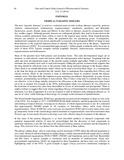| dc.description.abstract | The term “parasitic diseases” is used in a restricted sense to refer to those diseases caused by protozoa
(malaria, schistosomiasis, leishmaniasis, trypanosomiasis, amoebiasis, giardiasis) and helminths
(hookworm, ascaris, filarial, taenia and flukes). It also refers to diseases caused by ectoparasites (body
lice, scabies, jigger). Although parasitic diseases are widespread globally, they tend to be prevalent in the
African countries particularly those within or close to the tropical rainy forests. Many tropical parasitic
diseases are endemic in countries where the population has low purchasing power. Consequently,
multinational companies do not invest significantly in research and development (R&D) of drugs to treat
these diseases as the expected financial return in minimal. This has given rise to the phrase, “neglected
tropical diseases (NTD)”. It is estimated that approximately 1 billion people worldwide suffer from one or
more of these NTD. Typical examples include lymphatic filariasis, onchocerciasias, schistosomiasis,
trypanosomiasis and leishmaniasis. | en_US |

